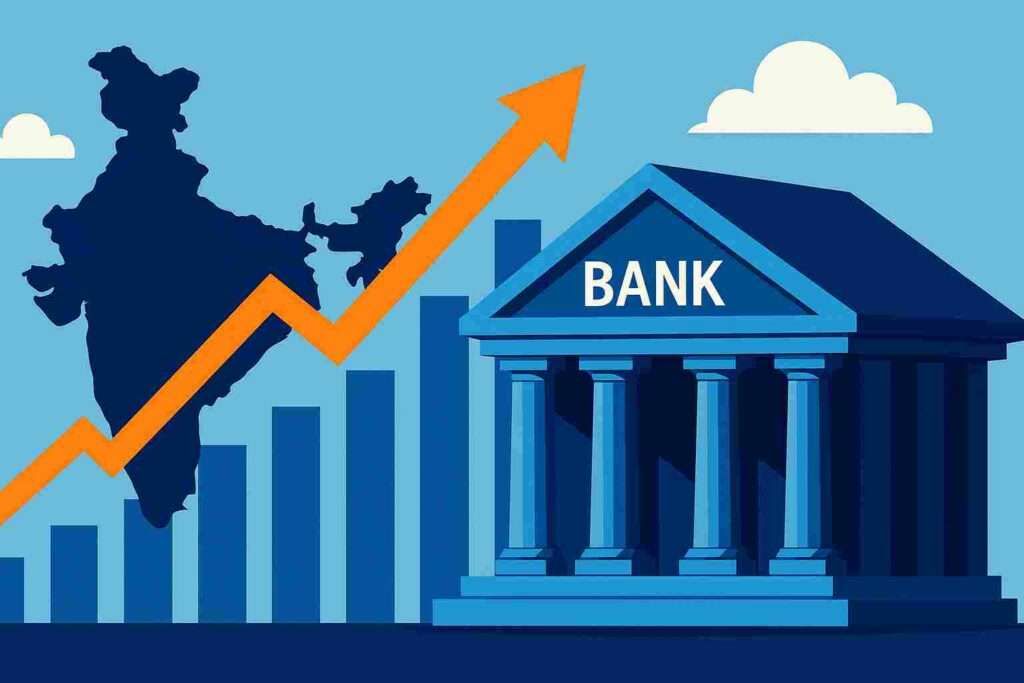Updated: 16 November 2025, 8:20 PM IST – India’s banking system is quietly moving towards another major shake-up. Unlike the earlier consolidation between 2017 and 2020, where smaller and weaker banks were absorbed into larger lenders and the recent merger, one state one RRB policy, the next round planned for FY 2026-27 aims to create a handful of big, globally competitive public-sector banks.
If the previous wave was about cleaning or making calculations better in the sector, this one is about strengthening it for the next decade. Also, making more top-level banks on the global stage.
Why the Government Is Planning Another Merger Wave
The simple reason for the upcoming merger: now scale matters, need more global banks from India.
India today has 12 public-sector banks, down from 27 a decade ago. These 12 big govt banks jointly hold more than ₹170 trillion in assets and serve over 8 lakh crore customer accounts. Yet globally, India still lacks banks that can compete in size with top international players, such as the Bank of China, HSBC Bank or other American banks.
The Finance Minister Nirmala Sitharaman recently said India needs “world-class, large banks.” That one line itself signals what’s coming — bigger balance sheets, stronger capital, and the ability to fund massive infrastructure and manufacturing projects. (Source: Reuters )
Unlike the earlier round that focused on survival, this one focuses on growth.
Which Banks Are Likely to Be Part of the 2026 Merger
Nothing is officially announced, but discussions and internal evaluations point to a few names.
Comparison Table — 12 PSU Banks (Size, Strength & Merger Probability)
(Data aligned to FY 2024-25 public disclosures / widely-reported figures)
| Bank | Total Assets (Approx.) | Strength | Merger Probability |
|---|---|---|---|
| State Bank of India (SBI) | ₹6.6 lakh crore+ | Strong | Low |
| Punjab National Bank (PNB) | ₹18+ lakh crore | Strong | Low |
| Bank of Baroda (BoB) | ₹18+ lakh crore | Strong | Low |
| Canara Bank | ₹17+ lakh crore | Strong-Moderate | Medium |
| Union Bank of India | ₹15+ lakh crore | Moderate | Medium |
| Bank of India (BoI) | ₹10+ lakh crore | Moderate | Medium |
| Indian Bank | ₹8+ lakh crore | Moderate | Medium |
| Central Bank of India | ₹4.7+ lakh crore | Weak-Moderate | High |
| Indian Overseas Bank (IOB) | ₹3.9+ lakh crore | Weak | High |
| UCO Bank | ₹3.6+ lakh crore | Weak | High |
| Bank of Maharashtra (BoM) | ₹4.3+ lakh crore | Weak-Moderate | High |
| Punjab & Sind Bank | ₹1.6+ lakh crore | Weak | High |
Banks mentioned in merger chatter:
- Indian Overseas Bank (IOB)
- UCO Bank
- Central Bank of India
- Bank of Maharashtra
- Bank of India
- Union Bank of India
Among these, some may merge with larger banks like Punjab National Bank (PNB), Bank of Baroda (BoB) and Bank of India, while one possibility under review is a Union Bank + Bank of India merger — creating the second-largest PSU Bank (Govt Bank) after SBI.
If implemented, India may move from 12 PSBs to just 4–5 large banks over the next few years.
What This Means for Customers
The first question most people ask: “Will my money be safe?”
Yes — mergers do not affect deposit safety. Your balance, FD, or account does not lose protection.
But some changes may happen:
- Branch names and signboards may change
- IFSC codes could be updated
- Mobile banking apps might merge
There could be slight temporary disruptions during the transition, but long-term stability improves when banks become stronger.
Impact on Investors
PSU bank stocks usually react sharply to merger news.
Unlike private banks, PSBs often move based on government decisions rather than quarterly results alone.
Investors should watch:
- Which banks are rumoured to be acquirers
- Which ones may get absorbed
- Possible capital infusion needs
- Any risk of dilution
Smaller PSBs with low public shareholding (like UCO Bank) are especially being tracked.
The Bigger Picture
If this plan moves forward in FY 2026-27, India will enter its most ambitious banking reform phase yet. Unlike the earlier clean-up act, this time the goal is competitiveness, not just consolidation.
A few large, well-capitalised banks could reshape credit growth, support India’s infrastructure push, and improve global presence.
For now, all eyes are on the government’s roadmap — and the list of banks that will officially be tagged for the next merger cycle.







